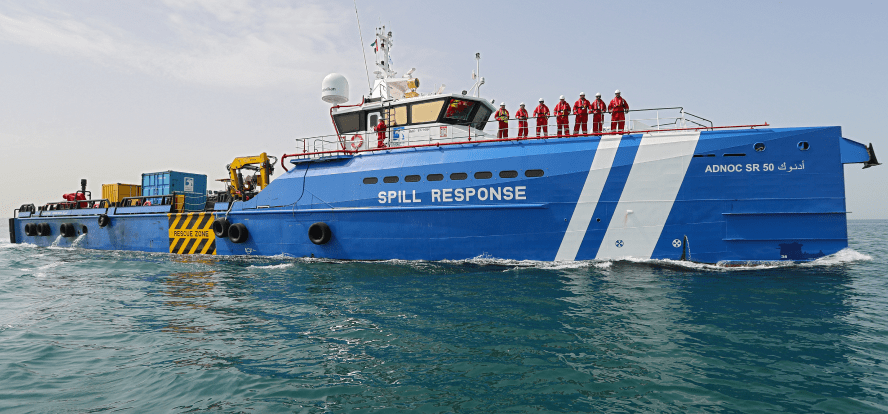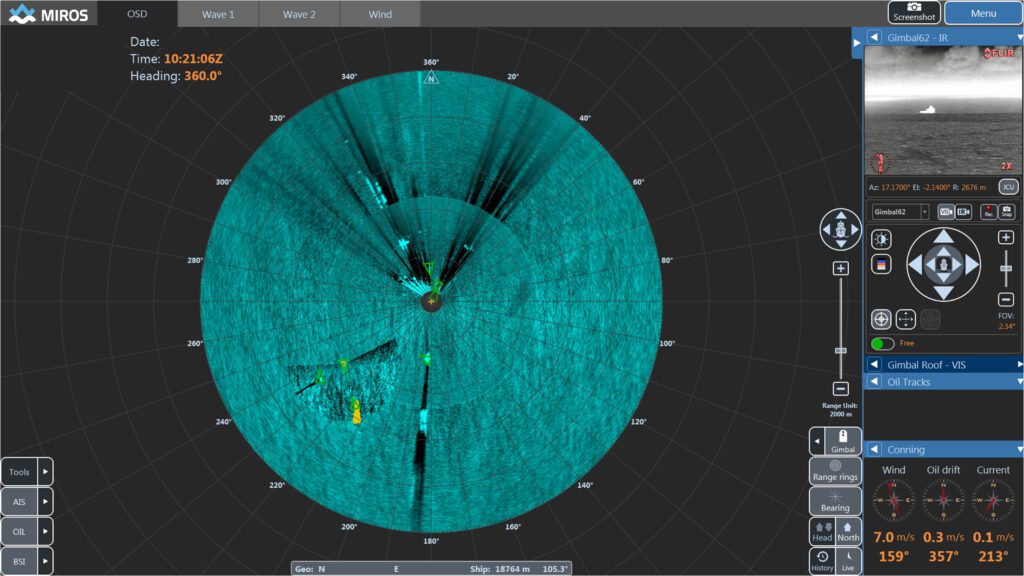Case Study: Ensuring ESG Accountability through reliable Oil Spill Detection
To enhance its oil spill response procedures, ADNOC Logistics & Services selected Miros’ Oil Spill Detection system for use on the five oil spill recovery vessels in its fleet, based on the system’s reputation for providing accurate, real-time information.
- Product: Oil Spill Detection
- Market: Oil & Gas



Image: Adnoc Logistics & Services
To download this case study, click here.
Background
As a company with a clearly defined commitment to producing oil and gas in as sustainable a way as possible, ADNOC Logistics & Services has environmental accountability at its core. It is continuously implementing sustainable practices to help propel the energy transition across the world, while simultaneously safeguarding the communities and environments in the regions it operates.
As well as being one of the world’s largest oil and gas majors, ADNOC L&S is also one of the largest oil spill (OS) and hazardous and noxious substances (HNS) responders in the Middle East. Complete with detection, monitoring, and forecast technology, it has a fleet of 26 purpose-built oil spill response, firefighting and safety standby vessels that operate across the region.
The Challenge
As a provider of particularly niche services, with one of the largest oil spill and HNS response capabilities in the UAE, ADNOC L&S can respond to any Tier 1, 2, and 3-level incidents immediately, and work proactively to protect the environment, from the coast and beaches to mangroves and marine life.
Covering such a vast area is no easy task and early and reliable detection of oil spills is vital. Accurate Oil Spill Detection (OSD) in real-time is necessary to ensure that ADNOC L&S can efficiently fulfill its responsibility.
For the global energy maritime logistics leader, a key requirement on their vessel based OSD systems is to monitor any surrounding areas for potential oil spills round-the-clock, unaffected by ocean conditions or low visibility. Automatic detection and immediate relay of an alarm, with detailed spill details to the captain and crew, are incredibly important to rapidly respond to mitigate the impact of oil slicks. Early detection and mobilization capabilities massively reduce the chance of oil being spread over vast areas and make spills easier to combat.
Also, a low false alarm rate is of the greatest importance because false alarms that initiate manual activities can be extremely costly.
The Solution
In order to enhance its oil spill response procedures, ADNOC L&S selected Miros’ OSD system for use on the five oil spill recovery vessels in its fleet, based on our reputation for providing accurate, real-time information.
It was not simply the strength of Miros’ kit that convinced, but also how we are as a company to work with, including our drive to support spill response and surveillance operations.
Often there can be issues when buying systems outright – be it with the company or the quality of the kit itself. It is difficult to test OSD system capabilities – you can’t just deliberately release oil into the sea to check if the kit works – so operators need confidence in what state-of-the-art technology brings – and ADNOC L&S trusts Miros to deliver. With Miros’ OSD system,
there is no need for physical intervention, though it can easily be switched to manual mode while guiding recovery operations. Early alarm generation also allows for more time to verify and characterize any spill, to understand the spill dynamics in combination with local environmental conditions, and to decide on the appropriate response.
Crucially the alarm is only triggered when the “right” combination of indicators is identified, removing the probability of false alarms and associated resource waste. Even in the toughest conditions, the OSD system’s infrared and optical cameras can aid operators in the verification and characterization of oil spill detections.
The Value
After several months of operation, there has been nothing but positive feedback about Miros’ OSD system. The advanced measurements and analytics provide the users with valuable insights for data-driven operations, enabling automatic detection of oil spills, as well as accurate monitoring of oil slicks, including size, trajectory, and thickness.
During a recent meeting, one of the company’s vessel captains reported that it is reliable and incredibly easy to use.
He said: “Miros’ OSD system is a crucial component of our everyday work, ensuring that Environmental, Social and Governance (ESG) remains a guiding light for ADNOC L&S. These principles are deeply integrated into our strategic objectives and core priorities and with the help of Miros’ technology we are able to deliver on them.”
Jonas Røstad, Chief Commercial Officer at Miros, adds: “We are seeing growing interest in the Middle East for this type of support, and ADNOC L&S are the front runners in this area.
“The Miros OSD systems work reliably from offshore installations, vessels and shore-based stations. Port and coastal agencies, oil companies, ship owners and oil spill response organizations that require round-the-clock oil spill surveillance, support for fast and efficient recovery of spills, and efficient deployment of boom and skimmers trust our solution.”
Employing an oil spill detection system is an integral part of any oil spill contingency plan, as it will significantly reduce the potential for both environmental impact and the cost of response operations.

Example of a Miros Oil Spill Detection dashboard for reliable round-the-clock spill surveillance to support fast and efficient mitigation and recovery of oil spills.


